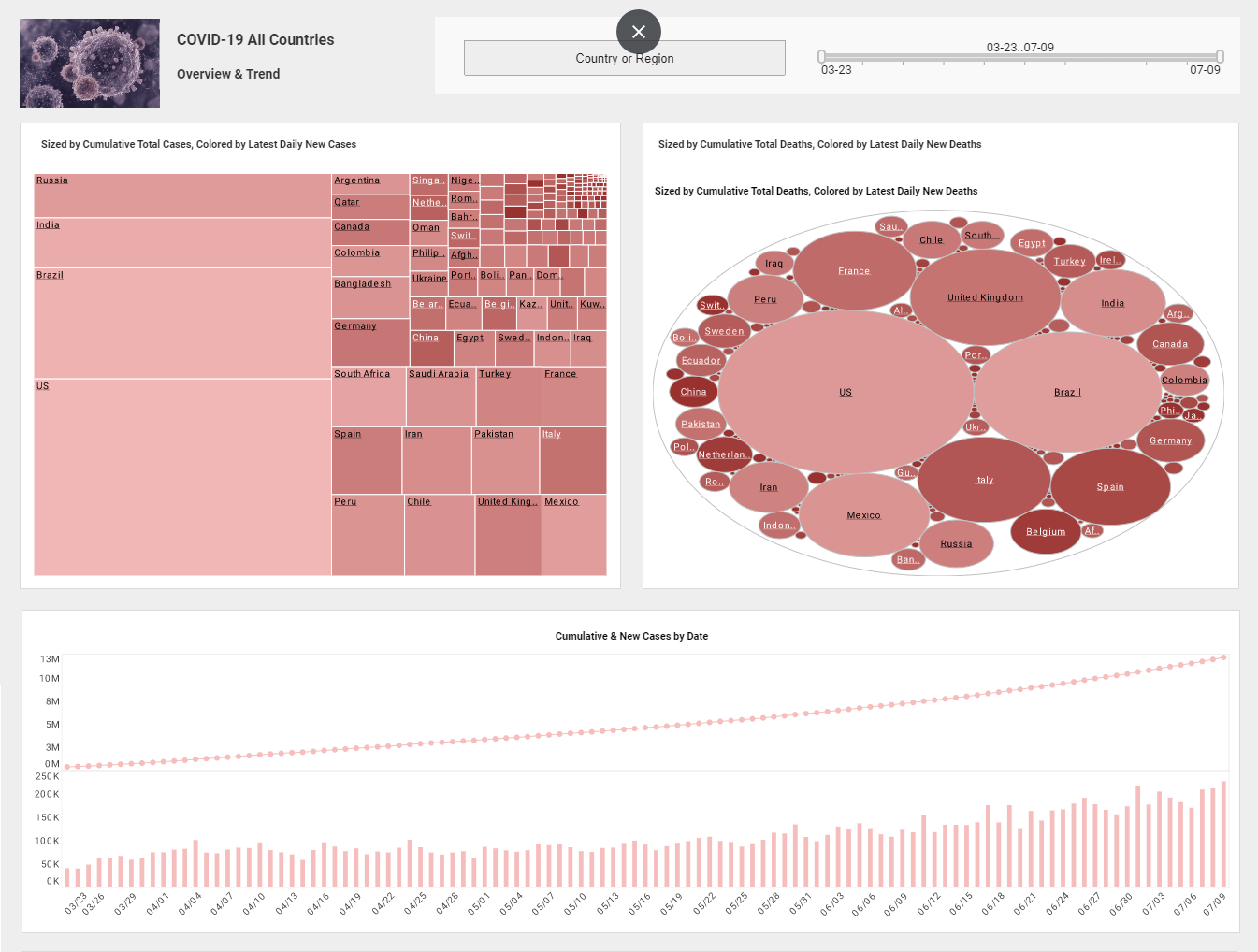InetSoft Webinar: Run Predictive Analytics Easily and Quickly
This is the continuation of the transcript of a Webinar hosted by InetSoft on the topic of "How Data Discovery Software Uncovers Stories in the Data." The speaker is Abhishek Gupta, product manager at InetSoft.
Even a business person can run predictive analytics pretty easily and quickly without having to actually change the data tables. That’s the beauty of connecting these built-in analytical functions. In a regression based model, you’re examining results against the core data and then predicting. So let’s take a look. We’re going to do an example of medical claims data. The question is who are our high cost members? What makes them unique? And who else fits the same profile?
So in this case, there are 1.8 million medical claims from 21,000 members over a three period. Here is a list of all the claims and some filters to get started. The question is how to group the claims by members. This chart shows you members ranging from a small number of claims to large numbers of claims on one axis and on the other axis the range from low dollar value to high dollar value.
The issue is what are these ones who are up over the trend line. With a visualization you can quickly see these problematic ones. You can select that group with the mouse, and then click open panel, and create a model for high claim dollar members. There are about six or eight tables in this project. They’re looking at the currently selected rows which is what you visually selected.
| #1 Ranking: Read how InetSoft was rated #1 for user adoption in G2's user survey-based index | Read More |
All of these fields and tables are available, and they could have been imported from other tables. You can select off the ones that clearly on cause which is good modeling behavior. The model help you do that if you don’t get that and you can iterate through it. You then run a model out of the factors. It tells you what the contribution to the target is.
In this case, the primary diagnosis is high, as you might expect. Location is also high. The place of service is high. Whether it's out of pocket versus more coverage is high. So this is the set of conditions that drives these higher values, not just a diagnosis. So that’s important for you to get an understanding of it. Then you can hit predict on the model, and then it goes through all of the other members and scores them and it create a new field of predicted scores.
You can then select the predicted people and subtract out the one who already are in that situations. You have a list of 220 other members with 6,221 claims, and here is the list of claims who have high potential to move into that same high dollar claim problem category. And this is something we’re using across the board. A lot of our clients visually select the target that’s different than the rest. They try to understand what makes them different and the mathematics help you understand what you see visually. And then you can quickly score the rest to see what else might fit into the same category.
So the goal here is get fast answers which complements the visual discovery. They don’t need to know statistics. It's highly collaborative because that’s the kind of thing you want to share. Mathematically you see these things, but causality can be a problem. Sometimes we see situations where the staff is driving the behavior or where the staff was assigned after a donor made a large donation.
 |
View live interactive examples in InetSoft's dashboard and visualization gallery. |
One is causal. One is not. It's working the data with people who know it in that collaborative fashion where you kind of pull out what really matters, and what doesn’t. And we are find business staff can do this, and it's better if the team that knows the business and knows the data does it because they are the ones that want the story to start emerging from the data. They are best able to grasp it and work with it.
So to summarize what we have covered. We started with the business intelligence landscape with the theme of data tell stories. But end-users are often stuck and end up in the Cycle of Pain. The new technologies that have the goal of breaking the Cycle of Pain are data visualization and self-service analytics. We went through four quick use cases, one in higher education with a call center looking at who are my large donors and whose are not and let’s figure out why.
We looked a financial services case study where we started from scratch. For a transportation example we looked at a large network and tried to see patterns in the midst of detail, and the detail there was about a million flights a year. So it's hard to see in the detail. Then in healthcare we’re looked at a couple of million claims to find a bunch of outliers, and we’re tried to understand where my other risks points are.
| Previous: Data Visualizations Are Quick at Solving a Problem |


